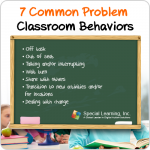Blog Categories
- ADHD
- Applied Behavior Analysis
- Autism Awareness
- Autism Service Providers
- Case Studies
- Dignosis
- Classroom Management
- Credentials
- Ethics
- Family Matters
- FAQs About LIVE Events
- Financial Planning
- Holiday Planning
- IEP's
- Panelists
- Private Equity in Autism & ABA Industry
- Psychopharmacology
- Sensory Processing Disorder
- Speech and Communication
- Subject Matter Experts
- Summer Planning
- Transition Planning
The Benefits of Behavioral Treatment for Children and Adolescents with ADHD
The Benefits of Behavioral Treatment for Children and Adolescents with ADHD
Did you know that according to the National Institute of Mental Health behavior analysis also known as behavior modification is the only evidenced based non-medical treatment for ADHD?
During behavior analysis, Board Certified Behavior Analysts, or BCBAs, will train you in implementing effective strategies for improving a child’s behavior.
Behavior analysis is often put in terms of ABCs which are:
- Antecedents – things that occur or happen before behaviors
- Behaviors – the behaviors that the child does that parents and teachers want to change and
- Consequences – whatever happens after the behaviors occur
In behavioral programs, adults will learn how to change antecedents and consequences. For example, a mother may learn how to give a command (the antecedent) and how to react when her child obeys or disobeys her. What happens before or after the behavior occurs is crucial for behavior change which in this example would be how the child responded to the command.
By consistently changing the ways that parents respond to their child’s behaviors, they essentially teach the children new ways of behaving. If a teacher is involved, the parent and teacher should carry out the behavioral intervention at the same time in order to achieve the best results. It is important that all of these components are incorporated into the behavior plan:
- Start with goals that the child can achieve in small steps.
- Be consistent. This means consistency across different times of the day, in different settings and with different people.
- Implement behavioral interventions with the intention of carrying this out for the long haul rather than implementing this for a few months.
- Finally it is important to remember that teaching and learning new skills take time, and your child’s improvement will be gradual. So remember to be patient if you do not see immediate progress once you’ve started the behavioral treatment.
References:
http://www.help4adhd.org/treatment/behavioral/WWK7
RECOMMENDED PRODUCTS
Intro to Strategies to Increase Beginner Classroom Participation Skills







